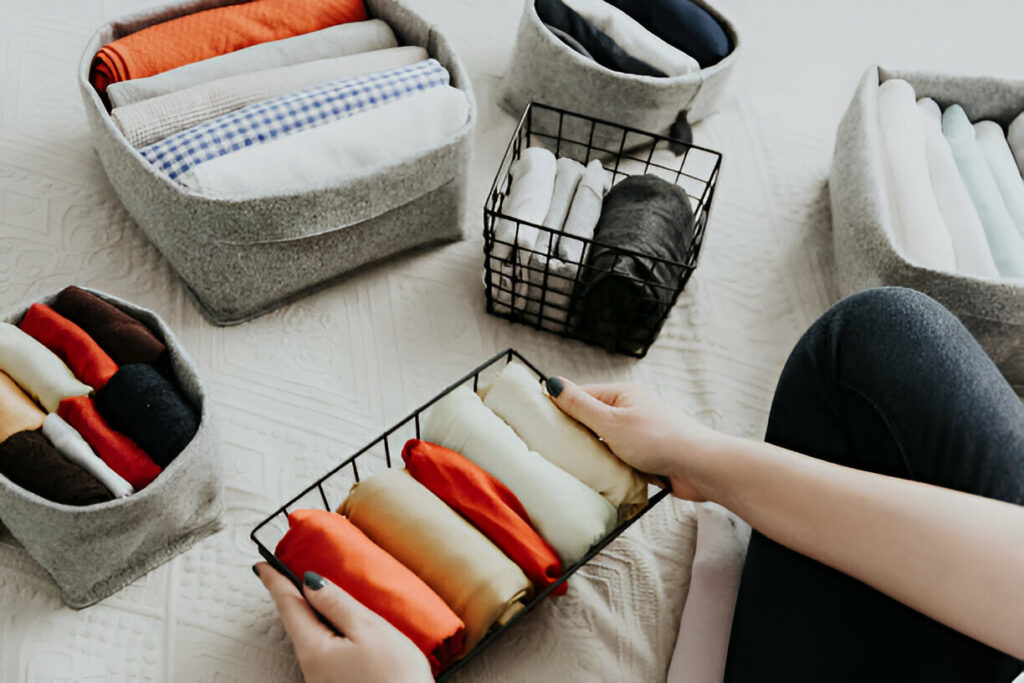Organizing your home and decluttering can feel overwhelming, but with a structured approach, it can be a rewarding experience. Below is a step-by-step guide to help you transform your living space into a clutter-free, well-organized environment.
1. Understanding Decluttering vs. Organizing
- Decluttering refers to the process of removing unnecessary items from your space to reduce clutter.
- Organizing involves arranging the remaining items in a way that maximizes functionality and accessibility.
2. Assess Your Space
Before diving in, identify areas that need the most attention. Consider the flow of your home and common trouble spots for clutter, such as:
- Unused or underused rooms
- Cluttered storage spaces (closets, drawers, garages)
- Surfaces like countertops, tables, or floors.
3. Create a Plan
Whether you prefer tackling one room at a time or focusing on specific types of items (e.g., clothes, books, electronics), having a plan will keep you focused and organized.
4. Decluttering Your Home
Step 1: Sort Items into Categories
Sort your items into four categories:
- Keep: Items you love, use regularly, or need.
- Donate/Sell: Items in good condition that you no longer need.
- Recycle: Items that can be recycled, such as paper, cardboard, glass, or electronics.
- Throw Away: Broken, worn-out, or unusable items.
Step 2: Let Go of Unnecessary Items
Ask yourself:
- Do I have sentimental value for this item? If so, consider storing it or displaying it.
- Have I used this item in the past year? If not, it might be time to let it go.
Step 3: Decluttering Common Areas
- Entryway: Keep only essential items like keys, mail, and a small bench or shoe storage.
- Kitchen: Streamline your utensils, appliances, and food storage for efficient use.
- Bathroom: Remove expired products and keep essentials within reach.
- Bedrooms: Keep bedding, clothing, and personal items organized, ensuring you have space to move comfortably.
Step 4: Donate or Sell Items
- Donate: Clothes, books, and household items in good condition can be donated to shelters, thrift stores, or online platforms.
- Sell: Consider selling items through online marketplaces like eBay, Facebook Marketplace, or Poshmark.
Step 5: Recycle Responsibly
Ensure that items like electronics, paper, and glass are properly recycled to minimize environmental impact.
5. Organizing Your Space
Step 1: Zone Your Space
Divide your space into zones based on function:
- Functional Zones: Cooking, dining, working, relaxing.
- Storage Zones: Areas for seasonal items, out-of-season clothes, or rarely used items.
Step 2: Declutter Your Closets
- Clothing: Keep only clothes that fit, flatter you, and align with your current lifestyle.
- Shoes: Store in a way that maximizes space and accessibility.
- Accessories: Use small bins or organizers for items like belts, scarves, and jewelry.
Step 3: Organize Kitchen Cabinets
- Categorize: Group similar items together (e.g., pans with pans, baking supplies with baking supplies).
- Labeling: Use labels or drawer dividers for easy organization.
- Waste Management: Implement an efficient recycling and trash system.
Step 4: Create Vertical Storage
Maximize vertical space with shelves, hanging organizers, or stackable containers, especially in smaller or crowded areas.
Step 5: Personalize Your Space
Once organized, add personal touches like artwork, plants, or decorative items that reflect your personality and style.
6. Preventing Clutter from Returning
Step 1: Establish Routines
- Purge Regularly: Schedule time each week to sort through new items.
- Maintain Order: Take a few minutes daily to tidy up and return items to their designated places.
Step 2: Mindful Purchasing
Before buying something new, assess if it aligns with your current needs and lifestyle, and if it has a designated spot in your organized home.
Step 3: Create Systems for Incoming Items
- Mail: Sort and file documents immediately to avoid paper clutter.
- Groceries: Store food in organized containers to prevent kitchen chaos.
7. Emotional Considerations and Motivation
- Letting Go of Sentimental Items: If an item holds emotional value, consider taking a photo and storing the item or displaying it thoughtfully.
- Stay Motivated: Focus on the benefits of a clutter-free space, such as reduced stress, improved productivity, and enhanced relaxation.
8. Conclusion
Decluttering and organizing your home is a journey that requires patience, effort, and commitment. By creating a plan, addressing emotional attachments, and maintaining your space, you can create a clutter-free environment that promotes peace, productivity, and joy.
Embrace the process and celebrate small victories. A well-organized home not only enhances your living experience but also contributes to your overall well-being. Happy decluttering!


